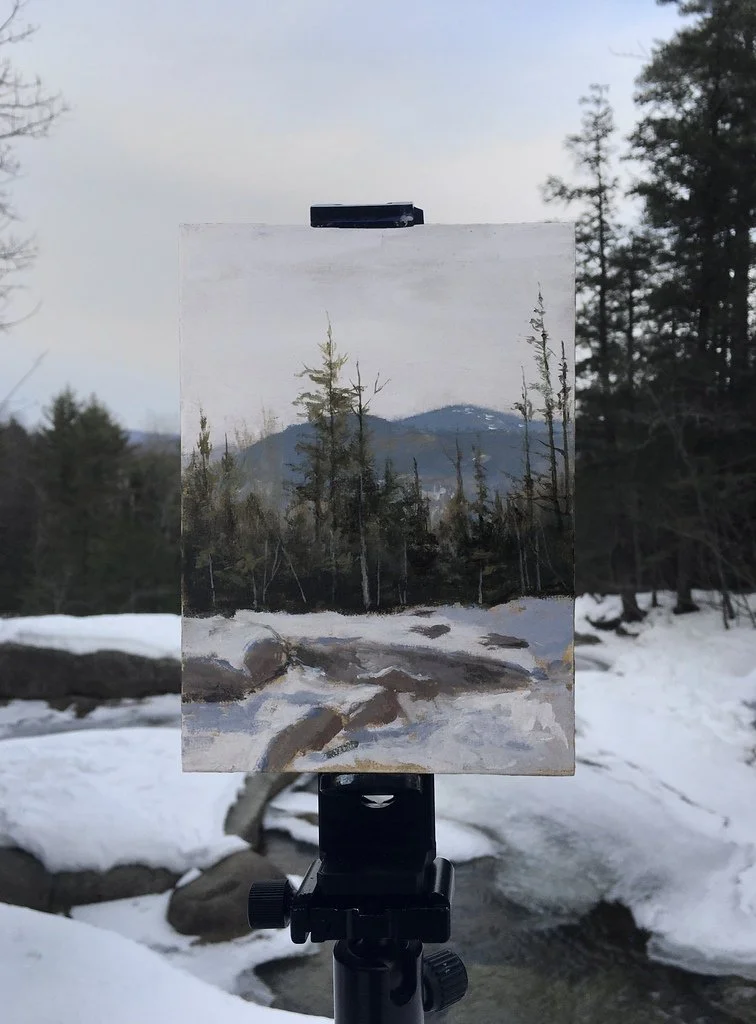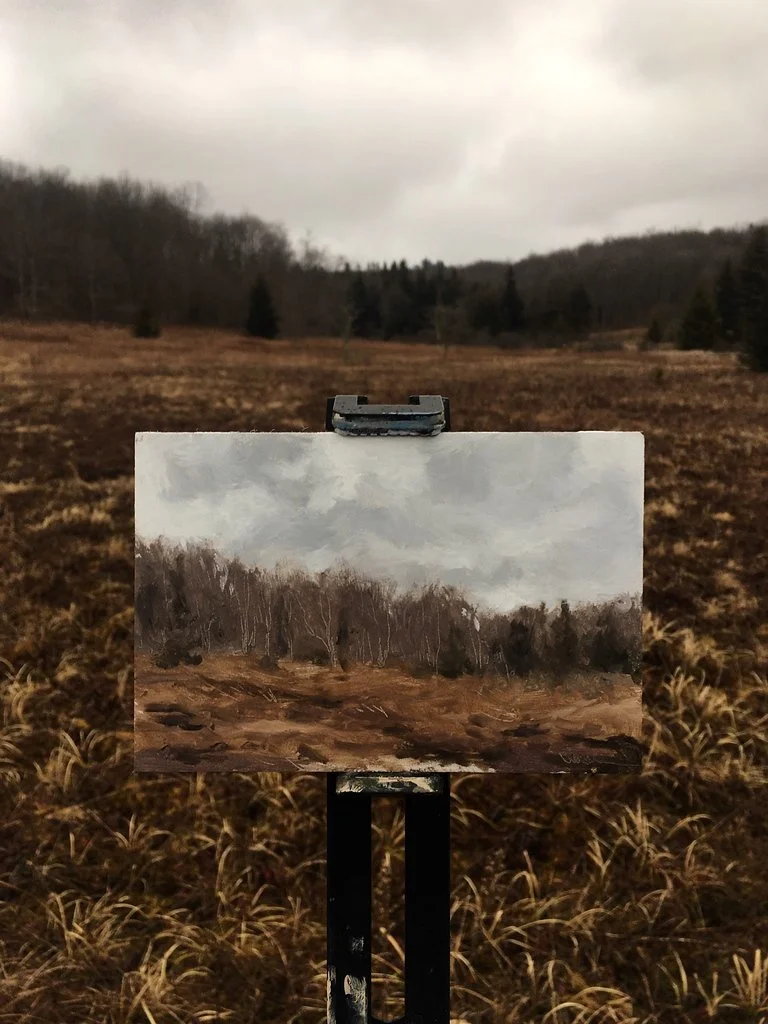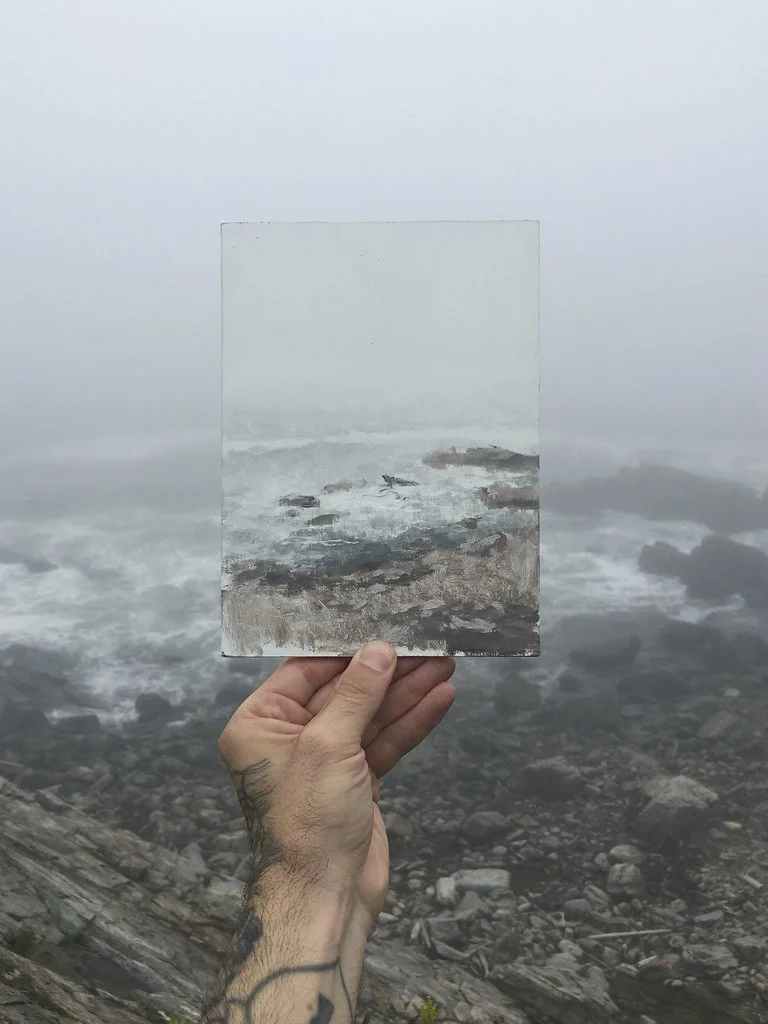Editor's Note
In Plein Air, Mike Adams works at the fragile seam where observation meets memory, and where landscape becomes less a fixed geography than an ephemeral correspondence between painter and place. These images, poised between immediacy and reverie, remind us that seeing is never neutral. The land itself resists capture, shifting with light, weather, and mood. In Adams’s hand, the scene becomes a negotiation between what is present and what is already slipping away.
What these works reveal is not nature in any objective sense, but the phenomenological act of perceiving it: how light settles on water, how clouds bruise the sky, how trees dissolve into mist. The act of painting outdoors, in situ, is less about fidelity to a view and more about bearing witness to change, to time’s slow and continual abrasion of form. These are landscapes marked by attention, by presence, and by the artist’s humility before forces larger than himself.
Adams’s Plein Air paintings ask us to consider: What does it mean to see? To remember? To translate experience into image, knowing that all acts of translation are imperfect, fleeting, and ultimately human? His brushwork answers not with certainty but with quiet acknowledgment—that we look, we try, and in the trying, we momentarily belong to the world we observe.





